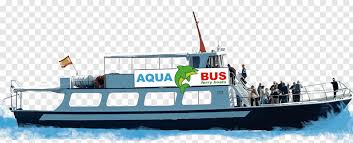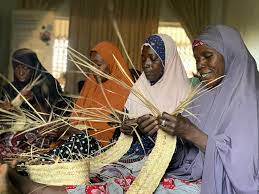
Transportation is an essential part of human activity, and in many ways form the basis of all socio-economic interactions.
Indeed, no two (2) locations will interact effectively without a viable means of movement.
In many developing countries, inadequate transport facilities are often the norm rather than the exception. Thus, a good transport system is essential to support economic growth and development.
Since the attainment of independence in 1960, the problems of Nigerian transport system include bad roads; inadequate fleets of buses or trucks; irregular, inadequate and overcrowded trains and airplanes and congested ports. These are common features of the developing world.
In line with these are physical problems such as dearth of suitably-trained transport managers and planners, capital restructuring bottlenecks, serious issues of institutional reforms and ineffective traffic regulations. The share of transport in the gross domestic droduct (GDP) is in the neighbourhood of three percent (3%).
Transport statistics are grouped into four (4) basic categories, namely, Rail, Road, Water and Air Transport.
- Rail Transport
Rail transport is usually the most suitable mode of transportation for heavy traffic flows when speed is also an advantage because of the lower cost per person per load as the train load increases.
Nigeria’s single-narrow-gauge railway line constructed in the colonial period was for many years the only mode of freight movement between the northern and southern parts of the country.
Because Nigeria's railways are in a perilous condition, the government is trying to rectify the situation by privatizing the Nigerian Railway Corporation.
- Road Transport
Road transport is the most commonly used mode of transportation in Nigeria today. Road traffic depends on the pattern of human settlements, accounting for more than 90 per cent of the sub-sector’s contribution to the gross domestic droduct (GDP).
Road transport activities involve the conveyance of passenger’s en-masse or in small numbers, the transportation of animals, farm produce and merchandise and the rendering of mobile services (clinics, libraries and banks).
- Air Transport
Air transport has a unique advantage over all other modes of transport if speed, time and distance are major considerations. Air transport is of high value in relation to weight. It is also preferred where accessibility by other modes is a problem (especially in riverine or mountainous regions).
- Water Transport
Water transport scores a distant second to road transport, with an average share of about one point six percent (1.6%) of Nigeria’s gross domestic product. Water transport is slow and therefore, unsuitable for passenger movement, except for holiday and tourist traffic where time is not a constraint or where other forms of transport are not available.
Water transport has the following three components: ocean transport, coastal water transport and inland water transport.
Being a megacity and emerging smart city, it is quite obvious that efficient traffic management can best be experienced in Lagos State if the four (4) modes of air, rail, road and water transportation are effectively integrated to complement one another. Commuting the over twenty million (20,000,000) people of Lagos State largely on the road has, thus far, proven complicated.
Lagos is the undisputed economic nerve center of West Africa, with every potential to become the third (3rd) largest mega city in the world after Shanghai and Mumbai. Today, many mega cities of the world depend on diverse mode of transportation for socio-economic growth and development.
For obvious reasons, Lagos has great potential to develop its water economy to a highly competitive level. If this is done, fishery, tourism, water transportation and the likes would immensely benefit.
Since twenty-five percent (25%) of the state’s landmass consists of water body, it is, therefore, not surprising that the present administration in the state is poised to put in place the right strategies that will make various water related enterprise in the state flourish significantly.
The six (6) routes principally been plyed include Ikorodu to Falomo; Ikorodu to Ebute Ero and Marina; Ebute Ojo to Ijegun Egba, Apapa and Marina; Bayeku to Oke Ira Nla and Falomo; Mile 2 to Marina, and Badore to Ijede.
The global passenger ferries market is estimated to value at over US$ 2.5 Bn in 2019, and is projected to register a compound annual growth rate (CAGR) of three point four percent (3.4%) in terms of value over the forecast period (2019–2023). The first five-year cumulative revenue is projected to be over US$ 14.5 Bn, which is estimated to increase moderately over the latter part of the five-year forecast period.
Modern cities are highly transport dependent and this makes it essential for cities to develop efficient transportation systems that provide effective links within the city and for both the national and global transportation systems.
Aside from being the oldest means of transporting goods and services, inland waterways have been associated with facilitation of commerce, provision of employment and wealth creation among many other benefits.
Looking back to the period of the industrial revolution in Europe, waterways played an essential role. They served as initial corridors of transportation and many of them eventually became important areas of commerce and industrial development.
Several cities of the industrial revolution era (such as Oslo, Hamburg and Liverpool among others) had most of their industrial and commercial activities located close to the waterfronts.
However, from the mid-20th century, the importance of waterborne transport declined significantly with the increasing development of motorways and the associated inland urban sprawl development (International Association of Public Transport, 2013).
However, in the recent years, increasing congestion on urban roads has directed attention to the development of other more sustainable forms of transportation.
In addition, the fact that efficient transportation systems serve as catalyst for sound land use planning is increasingly being recognised.
Both of these reasons have provided an opportunity for water transport to play more significant role in urban mobility schemes in many parts of the world (International Association of Public Transport, 2013).
Water transport provides the opportunity for improving urban transportation by helping to provide faster (hardly experienced congestion), more efficient and better integrated transport services for the urban area.
Nigeria has about eight thousand, six hundred (8,600) kilometres of inland waterways and an extensive area of coastland of over eight hundred (800) kilometres (Ndikom, 2013). Up to early 1960s, inland waterways provided important routes for access from the coast to the hinterland and accounted for more than thirty percent (30%) of the total produce transported in the country.
However, by the late 1960s the significance of this important means of transportation had declined. At present only about three thousand (3,000) kilometres of the country’s inland waterways is being harnessed. Although, water transport is known to be comparatively cheaper and most efficient for riverine communities, this mode of transport is currently highly neglected and undervalued in the country.
Lagos, the commercial capital of Nigeria has been observed to possess the necessary inland waterway network capacity to transport commuters to most parts of the city, but the waterways are grossly under utilized. The existing water transport facilities are inadequate both in terms of size and access to commuters.
It has also been noted that the Lagos State Government’s thirty (30) year transportation improvement plan of integrating the Bus Rapid Transit (BRT) with light rail schemes may not solve the congestion problem, except it also incorporates the water transport mode.
The improvement of water transport in Lagos has the potential to help address the serious road congestion and its associated problems such as extended travel time, loss of man hour, and negative effects on the environment and human health.
If well-developed, water transport would help improve mobility since it could easily be organized to have fixed travel time because it hardly experiences congestion. Focusing on water transport is important and relevant in Lagos, because of its high potential for developing this mode of transport.
It is also more economical and sustainable compared to road transport. This is because, in the long run, it entails less financial investment since it requires less maintenance and has higher capacity for passengers and goods.
According to the 1991 national census the State had a population of five million, seven hundred and twenty-five thousand, one hundred and sixteen (5,725,116), which had increased to nine million, one hundred and thirteen thousand, six hundred and five (9,113,605) by 2006.
The population was estimated to have risen to eleven million (11,000,000) by 2011 and to twelve million, five hundred thousand (12,500,000) in 2016 (Nigerian Bureau of Statistics (NBC), 2008 and 2013).
The city’s metropolitan area which had a population of only two hundred and ninety thousand (290,000) in 1950 is now estimated to have a population of over twenty million (20,000,000) and it is expected to grow to be the world’s third largest city by 2050.
The Lagos State Government (LASG) in 2008 enacted the Lagos State Waterways Authority Act, which established the Lagos Waterways Authority (LASWA).
Lagos Waterways Authority (LASWA) is charged with the responsibility for coordinating and managing the reforms necessary for the long-term growth and development of water transportation in Lagos State, including the granting of ferry licenses and concessions for the operation of terminals to the private sector.
The Authority has developed the following guidelines to help interested parties on the elements required for setting up as an operator and the pursuant responsibilities to both the Authority and the general public:
Passenger ferry and cargo freights:
§ An application for an Operator’s Licence to the Lagos State Waterways Authority.
§ Payment of registration fee by ferry and inland cargo operators with an annual renewal fee to the Authority.
§ The Submission of proof of funding for boat acquisition, operations and infrastructural development where necessary.
§ Ferry boats to be acquired and infrastructure to be developed must be in compliance with the strict technical specifications of the Lagos State Waterways Authority.
§ Proposals on the costs, revenue projections for the next three (3) years should be forwarded to the Authority within two (2) weeks of Provisional License.
§ The minimum number of boats in the fleet of a registered operator must not be less than four (4) ferry boats with a minimum capacity of fifty (50) passengers and/ or six (6) water taxis/buses of minimum of thirty (30) passenger’s capacities and/or two (2) car/passenger boats with a minimum of ten (10) and 50 passengers.
§ An annual payment of “route of concession fee” where applicable and such amount to be determined by the Authority.
§ Each wooden water craft certified for safety by the Authority will pay an annual registration fee.
§ All private/leisure boat owners/operators certified for safety by the Authority will pay an annual registration fee.
§ All boat clubs, waterfront bars and restaurants are to pay an annual fee as a corporate charge for the use of the waterways.
§ All vessels operating within Lagos Waterways are subject to annual Licence Tonnage Fee.
Some commercial routes in Lagos includes Ajah – Five Cowries – Marina/C.M.S, Badore – Five Cowries, Badore – Ijede, Baiyeku – Ajah, Baiyeku – Victoria Island, Ebute Ero – Ikorodu, Ebute Ojo – Ijegun Egba – Marina C.M.S, Ijede – Marina C.M.S, Ikorodu – Addax/Falomo, Liverpool – Igbo Elejo, Liverpool – Olodi Apapa, Marina/C.M.S – Ikorodu, Baiyeku – Langbasa, Ebute Ojo – Ibasa, Ebute Ojo – Ijegun Egba, Ebute Ojo – Irewe, Ijegun Egba – Ibasa, Liverpool – Five Cowries, Marina/C.M.S – Liverpool, Agboyi Ketu – Five Cowries, Agboyi Ketu – Marina/C.M.S, Agboyi Ketu – Mile 12, Ajah – Oworonshoki, Ijora – Ebute Ero, Ikorodu – Oworonshoki, Marina/C.M.S – Oworonshoki, Mile 2 – Addax/Falomo, Mile 2 – Marina/C.M.S, Oworonshoki – Ebute Ero and Oworonsoki – Five Cowries.
Water transportation in Lagos is expected to accommodate between five hundred thousand (500,000) to one million (1,000,000) passengers per day when fully operational as opposed seventy thousand (70,000) to one hundred thousand (100,000) passengers which it currently accomodates.






















